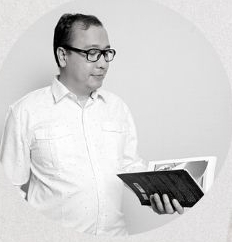Recently, a variety of digital content has increased. Content producers are scattered on the lines of YouTube, Instagram, Facebook, Twitter, and TikTok. Not to mention the covid-19 pandemic whacked. The increase was up to 20 percent.
In the midst of millions of digital content, choosing a suit content of citizens is important. “The first time, you have to know, what are your characteristics in the content that you create later,” said Ichsan Permana P or known as Mas Aik, content creator and author of the book Nanti Kita Sambat on Saturday (31/10). Mas Aik was present in a series of welcoming activities for new students of the UII Communication Science Study Program at Incoms (Introduction to Communications) 2020.
2019, Incoms raised Greenations and around efforts to protect the environment by re-popularizing the 3R idea. But, this in Incoms 2020 this time took the theme ‘The Future of Ours’. This theme tries to invite new students to investigate the development of communication from time to time and its contribution. Of course this is closely related to the strengthening of online culture during the pandemic.
On Incoms 2020 occasion, the committee invited Mas Aik to his Webinar so that new students can be inspired to create inspiring and positive digital content. Mas Aik shared by giving an example of his experience creating content at @merawatjogja before finally deciding to create @NKSTHI content.
For Mas Aik, apparently only a few need to be prepared to become a content creator. First, said Mas Aik, characteristics must be in digital content. “What kind of figure will you become? Now, in order to have your own characteristics, we need to learn how to show our character in the media,” said Mas Aik with the appearance of his studio.
Writing is the key to creating content. Writing is basic. It can be developed with structured thinking. He can also be married to hobbies, such as drawing. Mas Aik gave an example. He is very happy to draw. So he strengthens the content with his drawing skills. “I got a lot from drawing,” added Aik.
Either strengthening the characteristics, writing as the key to strong content, must be strong as well. No content is created without writing. According to him, learning to write must start from, for example, creatively managing the structure of writing, unique ideas, so that later strong writing can be transformed into other packaging for digital content. For example, converted into video packaging, pictures, photos and others.
One thing is Mas Aik’s main point of emphasis when becoming a content creator. The requirement to become a content creator is to develop a hobby into content. “What you can, what do you enjoy, yes you have to really focus there, then your content will be strong and inspiring,” he added.






